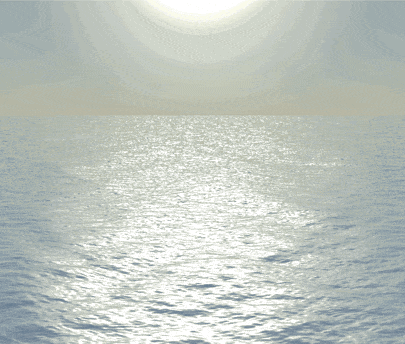Our models of ocean, land, and object reflectance provide heightened understanding of physical systems.
The Monte Carlo Scene simulation (MCScene) is a high fidelity model for hyperspectral imagery simulations at shortwave infrared, visible, and ultraviolet wavelengths. It models fully three-dimensional environments using MODTRAN LOS calculations and a Direct Simulation Monte Carlo approach. It includes a treatment of land and ocean surfaces, three-dimensional terrain, three-dimensional surface objects, and the effects of finite clouds with surface shadowing. Molecular absorption, Rayleigh scattering, aerosol absorption and scattering, multiple scattering, and adjacency effects are all taken into account.
The Robust Accurate Earthshine Skyshine (RAES) code models the irradiance of reflections off the Earth’s surface and atmospheric emissions as a source of illumination of airborne objects. RAES builds a 3d world from a series of 1d computations. It simulates ground reflectance and emissivity over a diverse range of ground materials, and includes spatially and temporally varying ground thermal emission. It accounts for the impact of broken cloud fields on the earthshine and skyshine irradiance. Modeled skyshine includes the infrared niteglow and structured auroral radiance at infrared and visible wavelengths.
The Optical Clutter Estimation Algorithm for Non-steady Seas (OCEANS) model, is a physics-based ocean background model designed for accuracy, computational efficiency, and platform independence. OCEANS models local effects such as surface roughness (waves), solar reflections (solar glint), breaking waves (whitecaps or foam), chlorophyll absorption and algal scattering. It takes into account that reflections from the ocean background waves are highly spatially and temporally varying and provides both wave realization capabilities of near-field viewing and statistical models for far-field viewing.

